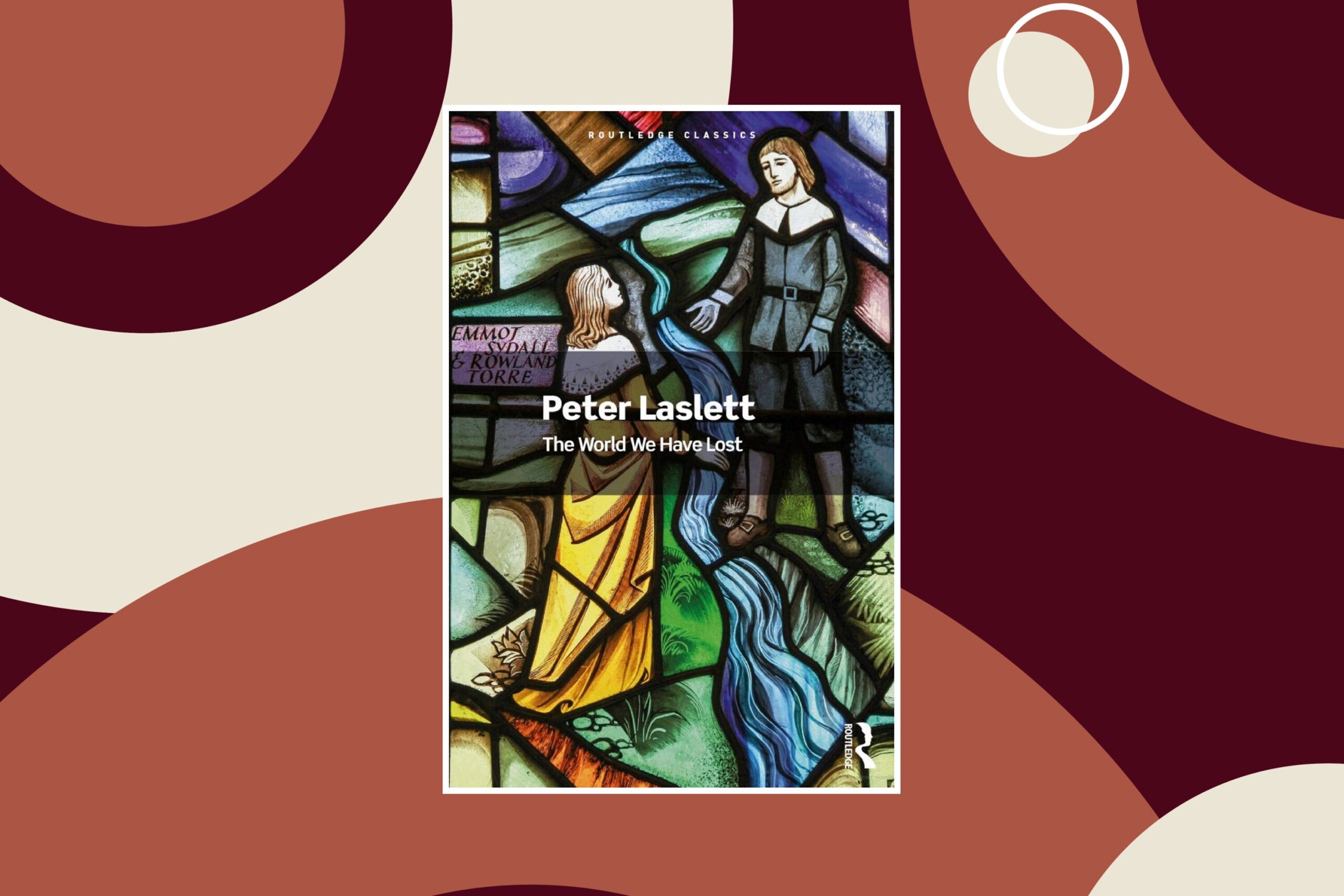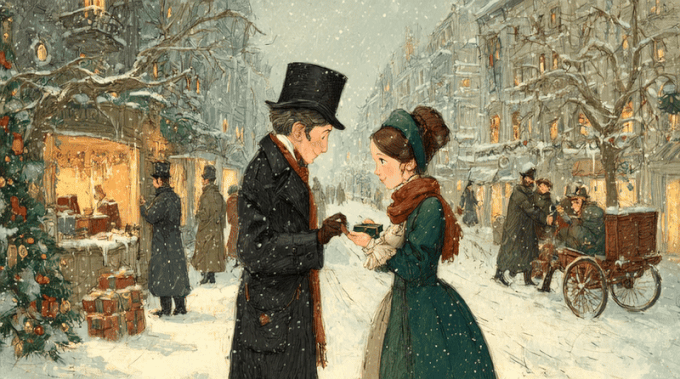Summary: Before the Industrial Revolution, life in England was marked by widespread poverty, illiteracy, and relentless labor. Even children worked from as young as three. Most people lacked education, political voice, and basic comforts, enduring hunger, disease, and harsh living conditions that kept them in constant proximity to hardship and death. Peter Laslett’s The World We Have Lost reveals that the deprivations often blamed on early industrialization were in fact the norm long before factories and industry.
Peter Laslett’s book The World We Have Lost is an influential history of what life was like in England before the Industrial Revolution. Laslett makes clear that the infamous problems of the industrial era were preexisting, not innovations that first arose with the construction of factories: “The coming of industry cannot be shown to have brought economic oppression and exploitation along with it. It was there already.” His book brings into focus the poverty and hardship faced by preindustrial people and the fact that “we now inhabit a world wealthy on a scale quite unknown before industrialization.”
Laslett describes the dearth of schooling, observing that neither Isaac Newton’s nor William Shakespeare’s parents could read. Inventories from Kentish towns between the 1560s and 1630s show a steady increase from a fifth or less owning books to nearly a quarter, although such inventories were recorded only for prosperous households and thus probably overestimate the extent of book ownership. Leicestershire wills from the 1620s to 1640s show that only 17 percent of people with wills bequeathed books to their heirs, and even among the gentry that figure was only 50 percent.
The “inability to share in literate life cut most men off from even contemplating a share in political power.” And the idea of women attaining a political voice was more absurd still. Even James Tyrrell—an associate of John Locke, a critic of absolutism, and a believer in limited political authority—noted in 1681, “There never was any government where all the promiscuous rabble of women and children had votes.”
Illiteracy often not only limited women’s ability to engage with society but also increased women’s vulnerability. “An illiterate maidservant whose place was five or ten miles from home was cut off from her parents and her brothers and sisters,” effectively unable to send them messages and alert them if her employer physically abused her or sexually assaulted her (as was, sadly, common).
Instead of learning to read, many children began work at shockingly young ages. Laslett informs the reader that, as John Locke noted in 1697, poor children were expected to start working at age three, contributing in what capacity they could, often through apprenticeships. The apprentice’s contract typically went thus: “He shall not absent himself by night or by day without his master’s leave.” Some apprentices “stayed subordinate to a master in a master’s house for the whole of their lives,” far beyond the initial terms of their contract.
Not only could children start work at age 3, but by age 12, they were considered old enough to help run businesses. In 1699, at an alehouse in Harefield, Middlesex, run by Catherine and John Baily, 6 of their 10 children still living at home “were above the age of twelve, . . . old enough to help run the family establishment.”
In England grooms could legally be as young as 14 and brides as young as 12, although Laslett notes that thankfully that was relatively rare in practice. Early marriages did occur, though. In 1623, a London parish clerk wrote disapprovingly of the wedding of a 17-year-old boy working as a threadmaker to the 14-year-old daughter of a porter, calling them a “couple of young Fooles.”
A rather offensive (to modern sensibilities) form of divorce known as “wife-selling” sometimes occurred among those who could not afford a formal dissolution of marriage. The Ipswich Journal records such a sale occurring in 1789:
Oct. 29, Samuel Balls sold his wife to Abraham Rade in the parish of Blythburgh in his county for 1 [shilling]. A halter was put around her neck and she was resigned up to this Abraham Rade.
Such bizarre episodes “reveal something of the slightly quizzical attitude of ordinary people to the official marriage code,” with local customs and practices varying wildly. Upon settling down typically, a man tilled land with the aid of his wife and children. Picture the “hard-working, needy, half-starved labourers of pre-industrial times,” who toiled nonstop and yet never produced enough to live comfortably.
Here was an economy conspicuously lacking in those devices for the saving of exertion which are so marked a feature of our own everyday life. The simplest operation needed effort; drawing the water from the well, striking steel on flint to catch the tinder alight, cutting goose-feather quills to make a pen, they all took time, trouble and energy. The working of the land, the labour in the craftsmen’s shop, were infinitely taxing. [The peasantry would] shock us with their worn hands and faces, their immeasurable fatigue.
Those who didn’t work in agriculture were often servants. The percentage of workers employed as servants in the population varied from as low as 4 percent to as high as a third of the population in relatively wealthy times and places, such as London and parts of Norwich in the 1690s. “Everywhere work of all kinds varied alarmingly with the state of the weather and of trade, so that hunger was not very far away.” Many had no employment and begged. “Wandering beggars . . . were . . . a feature of the countryside at all times.”
Any increase in the cost of food staples could prompt social discord. “Right up to the time of the French Revolution and beyond, in Europe the threat of high prices for food was the commonest and most potent cause of public disorder.” Public panic about food was often warranted, as the threat of hunger was all too real. In 1698 in Scotland, contemporary accounts say, “[m]any have died for want of bread, and have been necessitate to make use of wild-runches draff and the like for the support of nature.” A runch is a common weed.
Laslett makes clear that England, being wealthier than much of Europe, saw relatively few famines by the late early modern period. Still, England’s harvest year of 1623–1624 was devastating, and in some locations, such as Ashton, the number of recorded burials was over two-and-a-half times the typical level. Numerous burials record the cause of the death as starvation. The deaths recorded in the Register of Greystoke in England, in 1623, put names to some of these victims of starvation, including, “A poor hungerstarved beggar child, Dorothy,” and “Thomas Simpson, a poor hungerstarved beggar boy,” as well as “Leonard . . . which child died for want of food,” and 4-year-old “John, son of John Lancaster, late of Greystoke, a waller by trade, which child died for want of food and means.”
Preindustrial people also froze. Indeed, in cold climates such as those of northern and western Europe, “the necessity of gathering round fires and sharing beds, make it obvious that the privacy now regarded as indispensable, almost as a human right,” was once rare, with the masses forced to sleep next to each other and their farm animals for body heat.
If there was one thing that was better about the past, it was perhaps that people were—by necessity—tougher. London’s suicide rate circa 1660 is estimated as somewhere between 2.5 and 5 per 100,000 people, low by modern standards.1 But on the whole, what Laslett calls “the world we have lost” is not a world we’d want back.
- According to the most recent data from Britain’s Office of National Statistics, London’s suicide rate now stands at 7.3 per 100,000 people, while England and Wales have a suicide rate of 17.4 per 100,000. According to the most recent year of OECD data, only one OECD country has a suicide rate of under 5 per 100,000: Turkey, at 4.8 per 100,000. (In recent years, only two or three OECD countries typically manage to keep suicides below the upper bound of the estimated level seen in 17th-century London).




